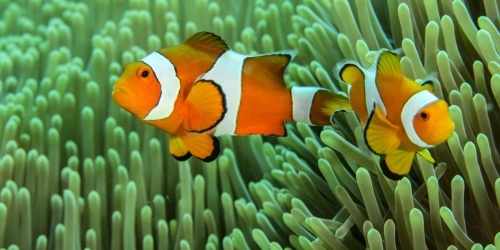
Grey Nurse Shark - Photo the Ocean Agency / Adobe
What is a grey nurse shark? While they may look frightening, grey nurse sharks (Carcharias taurus) are generally harmless to people but have been greatly depleted through fishing.
What does it look like? The grey nurse shark has a large stout body, grey to greyish-brown above and off-white below. Reddish or brownish spots may occur in the tail fin and to the rear of the body. They grow to at least 3.6 metres.
Where is it found? A cosmopolitan species, the grey nurse shark is found in inshore subtropical and temperate waters around continental land masses throughout the world. It has occasionally been recorded off the continental shelf. Grey nurse sharks are often seen hovering in or near deep sandy gutters or rocky caves, and in the vicinity of inshore rocky reefs and islands, usually at depths of between 15 and 40 metres.
Behaviour: Grey nurse sharks are slow but strong swimmers and are thought to be more active at night. They consume a wide variety of fish.
Threats: Sharks often have more to fear from people than we do from them, as they are extensively captured and eaten for food throughout the world. However, in Western Australia and some other parts of Australia, they have been listed as a threatened species and given full protection.
Breeding and caring for young: Even during the 9-12 month gestational period, these predators have an amazing way of ensuring survival of the fittest. The embryo sharks are held in egg cases inside the mother’s uterus. The unborn young eat the other eggs inside the egg case until only one is left. At about 5.5 centimetres long it hatches from the egg case but is still held inside the uterus. When about 10 centimetres long it develops teeth and will hunt other embryos inside the uterus until there is only one survivor in each of the mother’s two uteruses. The mother eventually gives birth to two live pups.
How you can protect grey nurse sharks: Don't buy souvenirs like shark teeth or jaws. Buy a picture or poster of your favourite shark instead!



























